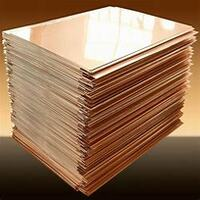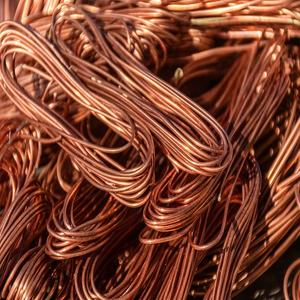1. Introduction
As of June 2024, global demand for high-conductivity grounding materials has surged due to increased infrastructure projects and stricter electrical safety regulations. In particular, copper rod usage in renewable energy installations—such as solar farms and EV charging stations—has risen by over 18% in the past quarter, according to industry reports from the International Copper Association. This trend underscores the need for professionals and DIYers alike to understand how to properly select, install, and maintain copper rods for reliable performance.

Copper rods serve critical roles in electrical earthing systems, welding applications, and industrial conductivity setups. Whether you’re installing a copper earth rod for lightning protection or using a copper brazing rod for metal joining, choosing the correct type and following best practices ensures safety, compliance, and longevity.
2. Understanding Types of Copper Rods
Not all copper rods are created equal. The right choice depends on your application:
- Solid copper rod (also called copper round bar or round bar copper): Ideal for high-corrosion environments and permanent earthing where maximum conductivity is required.
- Copper bonded earthing rod (or copper bonded ground rod): Features a steel core with a thick electrolytic copper coating. Offers strength and cost-efficiency while maintaining good conductivity.
- Copper clad steel ground rod (or copper clad earth rod): Similar to bonded rods but uses a thinner metallurgical bond; suitable for moderate soil conditions.
- Copper brazing rod and copper welding rod: Used for joining metals. For copper-to-copper joints, use copper to copper brazing rods or copper to copper welding rod specifically designed for non-ferrous metals.
Note: Avoid confusing copper strip (flat, thin stock used in busbars or roofing) with rod forms. While copper strip price varies based on thickness (e.g., 1mm copper strip or 25x3mm earth strips), rods are measured by diameter and length.
3. How to Install a Copper Earth Rod
Proper installation ensures low earth resistance and system reliability. Follow these steps:
3.1 Site Preparation
Choose a location with moist, conductive soil if possible. Avoid rocky or highly resistive areas. Check local codes for minimum rod depth—typically 8 to 10 feet (2.4–3 meters).
3.2 Driving the Rod
Use a hammer drill or manual driver to vertically drive the earthing rod copper into the ground. For hard soils, pre-drill a pilot hole slightly narrower than the rod diameter. Never strike the top directly with a steel hammer—use a driving cap to prevent deformation.

3.3 Connecting the Conductor
Attach a bare copper conductor (e.g., #6 AWG) to the rod using an approved exothermic weld or listed mechanical clamp. Ensure all connections are tight and corrosion-resistant.
3.4 Testing
Measure earth resistance with a ground resistance tester. Values below 25 ohms are generally acceptable; lower is better for sensitive equipment.
4. Using Copper Rods for Welding and Brazing
When performing copper rod welding or brazing:
- Clean both base metals thoroughly with a wire brush or solvent to remove oxides and grease.
- Preheat the joint area evenly to reduce thermal shock, especially for thick sections.
- Use a neutral or slightly reducing flame for copper brazing rod applications.
- Select filler rods labeled ‘copper to copper welding rod’ or ‘welding rod copper’ for compatibility.
Avoid using standard steel welding rods—they won’t bond properly with copper alloys like beryllium copper strip or nickel plated copper strip.
5. Common Problems and Solutions
5.1 Corrosion in Aggressive Soils
In acidic or saline soils, even copper bonded steel may degrade faster. Solution: Use solid copper round bar or increase rod length/quantity to compensate.

5.2 High Earth Resistance
Caused by dry soil or insufficient rod depth. Solution: Add bentonite backfill around the rod or install multiple rods in parallel.
5.3 Poor Brazing Joints
Often due to inadequate cleaning or incorrect filler. Always verify that your copper brazing rod matches the base metal composition.
6. Pricing and Sourcing Tips
Copper rod price fluctuates with LME copper rates. As of mid-2024, expect:
- Solid copper earth rod (5/8″ x 8 ft): $45–$70
- Copper bonded earthing rod: $25–$40
- Copper clad steel earth rod: $20–$35
For flat stock like copper strip for earthing or copper strip roll, prices depend on dimensions (e.g., copper earth strip 25x3mm price averages $8–$12 per meter). Search ‘copper strip near me’ for local suppliers to avoid shipping costs on heavy items like copper bars or copper ingot.
Avoid burning copper wire for scrap—it releases toxic fumes and degrades value. Instead, use mechanical strippers for the best way to strip copper wire cleanly and safely.
7. Conclusion
Selecting and installing the right copper rod—whether a solid copper round bar, copper bonded ground rod, or specialized copper welding rod—is essential for safety, efficiency, and regulatory compliance. By understanding material differences, following proper installation techniques, and addressing common issues proactively, you ensure long-term performance in earthing, welding, and industrial applications. Always prioritize certified products and consult local electrical codes before proceeding.
Our Website founded on October 17, 2012, is a high-tech enterprise committed to the research and development, production, processing, sales and technical services of ceramic relative materials such as How. Our products includes but not limited to Boron Carbide Ceramic Products, Boron Nitride Ceramic Products, Silicon Carbide Ceramic Products, Silicon Nitride Ceramic Products, Zirconium Dioxide Ceramic Products, etc. If you are interested, please feel free to contact us.

